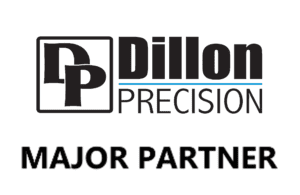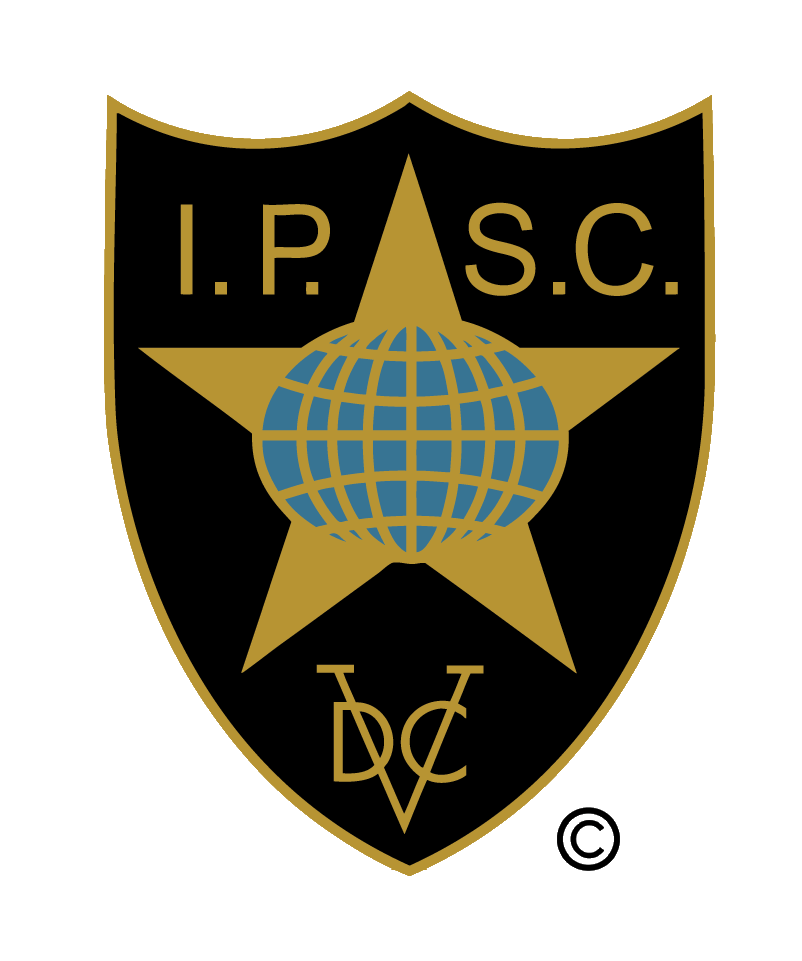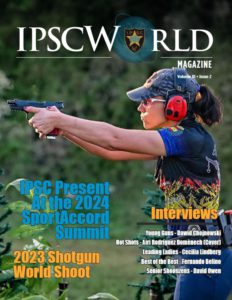Quality Practice – Structure and Guidelines
By Christian Sailer, 2022 IPSC World Champion, Dillon Precision’s Sponsored Shooter
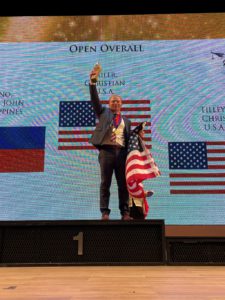 The only way to improve your shooting ability is to practice. How fast you improve is directly correlated with the quality of your practice. We have all fallen victim to going to the range without a plan, shooting a bunch of rounds and not learning or improving. Let’s discuss how we can ensure that each practice is a quality practice that takes steps forward rather than back in our shooting progression.
The only way to improve your shooting ability is to practice. How fast you improve is directly correlated with the quality of your practice. We have all fallen victim to going to the range without a plan, shooting a bunch of rounds and not learning or improving. Let’s discuss how we can ensure that each practice is a quality practice that takes steps forward rather than back in our shooting progression.
Where we’re at in the season dictates the focus of each practice session, but the core outline stays the same. Each of my practice sessions are comprised of a dryfire warm up, cold start, fundamentals check, and then 1-3 drills or scenarios. Let’s break it down.
The dryfire warm up is essential to every practice session. You never see baseball or basketball players skipping a warm up, so why should you? IPSC is a dynamic sport requiring athletic performance on demand, and you should treat your body and practice like a high-level athlete. This dryfire warm up should be structured and done before matches, home dryfire sessions, and the dryfire warm up before practice. I always start mine with light dynamic stretching. A few of the exercises include squats, arm circles, hip circles, plank walk outs, lunge torso twists, and hugs into chest expansion. Now that the body is ready to start training, I work into my shortened dryfire routine. This starts with building the grip without a draw from the holster and slapping the trigger to the rear. This checks that the grip I have will keep the sights aligned in the center of the target with the grip pressure I’m applying throughout an aggressive trigger pull. I then work this into my draw, ensuring I build up a grip conducive to shooting points at a high rate of speed from the holster. Grip is essential to this game and will build confidence as you improve it.
Next, I work on target transitions, getting the eyes warmed up to picking a spot in the center of each target and waiting until the red dot or iron sights meet what I’m looking at. I usually have an array of targets up, but while warming up at a safety table, I pick out spots on the wall or flowers/shrubs in the berm. Keep working draws, target transitions, trigger pulls and other gun handling skills until you feel confident and have a good feel for your vision and manipulation. This isn’t the time to go for your fastest reload, just focus on the process, and let your subconscious training take over.
Now it is time to load your gun up with live rounds! I have complete confidence in my ammunition, as I personally load it all on my Dillon Precision Reloader. But wait, don’t just jump right into the drills you’ve planned, let’s take advantage of the “cold start.” Many people are nervous about their first or “cold” stage, as in not hot or warmed up yet from shooting rounds. This is like the first stage we face in competitions, and let’s treat it as such. Whatever drill you’re shooting that day, plan a little run on it, maybe multiple positions, visualize and walk the stage like a match and shoot it as such. This is a great evaluation of where your skills are at on demand and can help shape your next practice session if it exposes any weaknesses.
After the cold start, evaluate how it felt. Was my grip feeling good out of the holster? Were my eyes picking up the center of each target? Was I shooting subconsciously, and did I shoot the plan? Where did I think my shots went, and more importantly, where did they actually go? Use this as data for a future training session.
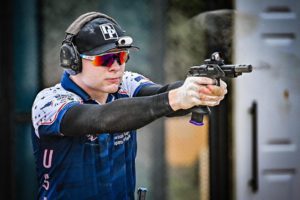 Now we have completed our dryfire warm up and cold start. Depending on where we’re at in the season, I’ll do a short fundamentals check. Shooting a few pairs at different distances assures I am shooting at sights pace and my grip is producing a linear sight path. On a day that focuses on movement, using poor fundamentals could reinforce bad habits. This is the reason behind a fundamentals check. Shooting a few magazines to make sure everything is locked in is worth it. It’s now time for the meat of my practice session.
Now we have completed our dryfire warm up and cold start. Depending on where we’re at in the season, I’ll do a short fundamentals check. Shooting a few pairs at different distances assures I am shooting at sights pace and my grip is producing a linear sight path. On a day that focuses on movement, using poor fundamentals could reinforce bad habits. This is the reason behind a fundamentals check. Shooting a few magazines to make sure everything is locked in is worth it. It’s now time for the meat of my practice session.
As a match approaches, I will simulate mini stages and practice executing on demand. Each run I’ll pick and memorize a different sequence to shoot. Outside of simulated scenarios before a big match, I primarily focus on single- and multiple-target engagements along with movement. I’ll pick a few various drills or short courses that focus on a particular skill to improve upon. For single-target engagements, I’ll pick drills that focus on grip/stance, trigger control, or vision, focusing on this heavily early in the season’s progression. Multiple-target engagements focus on engaging arrays with accuracy and efficiency. Changing the distance and difficulty of targets and snapping from the center of each use what I learned on single-target engagements to hit the center. For movement, I focus on how to enter and exit positions and cover the distance in between. I’ll use cones or barricades to simulate positions. This is also a good time to practice shooting on the move. That’s a basic outline of some of the “meat” of a practice session and days could be spent talking about drills and skills for this, but there are many qualified instructors, series of books, and online series that provide greater detail.
After completing the main portion of my training, I’ll always end with right- and left-hand only (strong- and weak-hand) training. I leave 3–4 magazines to dedicate for this training at the end of my practice. Since we shoot 99.99 percent of our shots with both hands, we often neglect training our single-hand shots. Baking this into each practice ensures this skill receives attention and can help separate oneself in the match. I suggest keeping a journal to recap the training session, what was worked on, how many rounds were shot on what gun, and notes for the next practice session. Last, but not least, I’ll sweep and pick up my brass to clean and get loaded on my Dillon Precision RL1100. During this time, I think about my upcoming matches and goals for the year.
Now that we’ve covered the overall structure, it’s important to discuss some guidelines and advice for your training. Practice things harder than what you’ll see in a match. Practice what you failed on in your last match. Practice what scares you and shakes your confidence. Shooting at 10 yards and hosing rounds across the range may feel great, but doesn’t help you get better. Constantly pushing your boundaries and working outside your comfort zone is essential for growth. You should prepare for everything you’ll encounter in a match. Practice small steel at distance, prone position, unloaded starts, and you’ll find an edge.
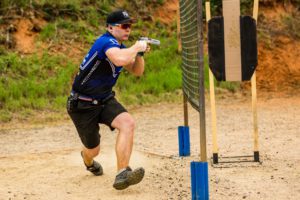 Each practice must have a purpose, and you must come with a plan. Practice sessions that lack a plan often turn into 10-yard hosing practice, which will stunt your growth. Similarly, every round fired in your practice must have a purpose. After shooting them, you must assess how it felt and what you called (meaning where were the sights on the target when the bullet left the barrel and the sights lifted). Before a training session, make sure to come prepared. Make sure your gear is cleaned and magazines are loaded. I preload all my magazines before I arrive to maximize my time on the range and focus on the training. I keep of list of accessories and gear to bring to make sure I have everything. Leaving a stapler or target stands at home always makes for a tough practice session.
Each practice must have a purpose, and you must come with a plan. Practice sessions that lack a plan often turn into 10-yard hosing practice, which will stunt your growth. Similarly, every round fired in your practice must have a purpose. After shooting them, you must assess how it felt and what you called (meaning where were the sights on the target when the bullet left the barrel and the sights lifted). Before a training session, make sure to come prepared. Make sure your gear is cleaned and magazines are loaded. I preload all my magazines before I arrive to maximize my time on the range and focus on the training. I keep of list of accessories and gear to bring to make sure I have everything. Leaving a stapler or target stands at home always makes for a tough practice session.
Video analysis has been helpful for my development. If you train with a partner, have them record runs. If you’re shooting solo, a tripod works great. Finding a good training partner (or partners) is great to help keep you accountable, develop range comradery, and share ideas. I’ve been very lucky to train with a group of great people and a few GMs starting out, and now I primarily shoot solo or with a good LE friend of mine. We balance catching up and overall camaraderie, while still pushing each other and getting great training.
Training is fun and exciting, but it’s also a grind and won’t always be fun when you’re trying to improve. Failing and making mistakes will happen, but if you aren’t, you aren’t pushing hard enough. Set goals and create an action plan to reach them. Nothing is better than reaching your shooting goals through dedicated practices and looking back with a smile at your progress. The entire crew at Dillon Precision and I would like to wish you the best in your upcoming training and matches. Make it happen and see you on the range!
